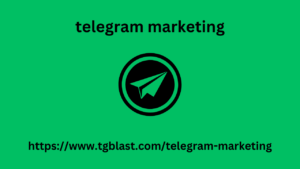Facebook and Google are the largest online advertising providers. How do they differ from each other and what exactly do they offer advertisers?
Google and Facebook are brands that need no introduction. The former has been synonymous with the internet search engine for over twenty years (it controls over 90 percent of the market). The latter has lost some of its share to competitors in recent years, but it remains the number one social media. In addition, the “properties” of both giants extend far beyond their original areas of operation.
Alphabet’s empire (Google’s parent company) includes a range of online services and tools, including YouTube, a video platform with (virtually) nonexistent competition. Meta, the owner of Facebook, also owns Instagram, the most popular photo platform, and WhatsApp, the most popular instant messaging app.
The number of interconnected services offered by both giants provides them with significant business synergy, but also translates into benefits telegram marketing for advertisers. Both companies collect huge amounts of data from various sources on user preferences and behaviors. This information allows for precise targeting and increases the effectiveness of reaching potential customers.
Marketing magic takes place through Google Ads and Facebook Ads – the largest digital advertising networks in the world. They are an indispensable tool for performance campaigns.
What exactly do both brands offer their customers?
Facebook vs Google: Basic Features and Differences
When allocating an advertising budget, you can’t rely solely on numbers. In addition to parameters (e.g. average CTR for a given network, average CPC for an industry, etc.) and other hard data, it’s important to understand the specifics of a given ecosystem and the related user behavior. Facebook and Google differ fundamentally in this respect.
Facebook is primarily a social network. It is therefore mainly used to maintain relationships, share events from private life and exchange information and opinions. An important element of Facebook is fan pages. Companies, organizations, celebrities and other types of users use them to communicate with their “followers”. The third important component of the Facebook ecosystem are groups focused on specific topics. The fourth, dynamically developing element is Facebook Marketplace – a platform that allows users to buy and sell products directly within the service. The Marketplace offers a wide range of categories, from household goods to vehicles, which makes it not only a place for transactions between users, but also an attractive advertising space for companies. In general, Facebook is primarily about interaction. Often lively and emotional – and therefore building fertile ground for advertising messages.
The most popular content format on Facebook is posts. They can include graphics, photos, videos, or text alone. A separate medium is reels and stories. The former are short, maximum 90-second videos that users can share publicly or with friends. The latter consist of maximum 15-second video materials or 5-second photos that are available for 24 hours from the time of publication.
Facebook, like other social media, is an environment where users spend a relatively large amount of time. Although the global average is only 33 minutes per day, in practice a large portion of users spend much longer on the site. Usually, however, these are short sessions repeated several times a day to check the news.
Google’s function is much narrower. It is simply a tool for searching for information on all sorts of topics. Content is served primarily in the form of search results. However, in recent years Google has implemented a number of new formats in its SERPs (search engine results page) that shorten the user’s path to the answer (which is, by the way, the subject of disputes with the actual content providers, i.e. the owners of the source pages). Some of them come from Google itself, others are based on content provided by the publishers of the pages.
Facebook vs Google: Targeting Methods
Facebook and Google also differ significantly in terms of advertising targeting. This includes the methodology, tools, and data sources used to match ads to audiences. There are also some similarities.
Facebook Advertising Targeting
Facebook primarily uses demographic data that users provide in their profiles (age, gender, education, marital status, etc.). The second key group of data concerns interests and behaviors. Users generously share this information with the service through reactions, comments, content they follow and share, membership in specific groups, etc. In addition, there are relationships and interactions with friends, locations, purchase history, and a number of other parameters.
Companies can also try to reach audiences they have already had contact with. In this case, advertisers can use sources of information such a 2016 with more free content as customer lists, website or app traffic, or activity on Facebook or other Meta platforms for (re)targeting. Advertisers can set up to 500 so-called custom audiences per ad account based on parameters such as time spent on the site, frequency of visits, clicks on promotional banners, newsletter sign-ups, and more.
Google Ads for e-commerce include:
Product Ads, also known as Google Shopping, Product Listing Ads, or simply PLAs, are campaigns designed to promote products on the Google Search Network (usually in the “Shopping” section) and on partner sites. PLAs include a product image, price, and store name.
Dynamic Ads (DSA)
Dynamic Search Ads (DSA), or dynamic ads, are a format that generates ads automatically based on the content on the advertiser’s website. They consist of a headline and a short text. They do not require specifying keywords, which saves a lot of work – especially for large online stores.
DemandGen Advertising
The purpose of DemandGen ads is to generate demand. Using placements within YouTube, Gmail, and Discover cards, they help create database d purchase needs. They are most often used at the top of the purchase funnel. Currently, DemandGen is the only type of Google Ads campaign in which we can use lookalike-based targeting.
YouTube video advertising
YouTube campaigns are also one of the formats offered by Google Ads. It allows for an attractive presentation of products and increased engagement of the recipient. Available formats include TrueView (skippable after 5 seconds) and Bumper Ads (up to 6 seconds long).

